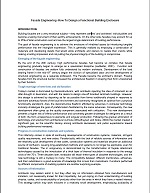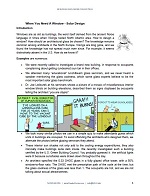Vapor Retarders in The South
This time of a year in the South, we experience very high water vapor pressures, manifesting itself by miscellaneous moisture problems of mysterious nature. Do you feel uncomfortable, your printers and copiers fail to print, envelopes glued themselves together, steel is covered with a thin layer of rust, wood delaminated and bowed, pests overrun the place, and the musty odor explains why your employees are on a sick leave?
There are many possible reasons, but this time we would take the vapor retarders under a magnifying glass. Why? Not just because of the steamy August behind our windows, but also because this subject is so simple and easy that it would make me look smart enough in comparison.
Have you ever wondered where the vapor retarder should be located? The answer is so simple, that it’s hard to understand why so many myths grew around this subject. Unlike air leakage, it’s easily quantifiable. However, unlike the air leakage, it’s hard to understand without elementary science education; which probably explains why architects fail so often and so miserably.We will quote some examples, but however funny architectural goofs may sound, the troubling part is their role models don’t do much better, as illustrated by examples from architectural education.
This article is available free of charge. Go to http://www.facade-doctor.com/information.html#vapor and click on the provided link. You will be asked to identify yourself, and as soon as you do, the file would be available for download.

 Condensation Risk Assessment
Condensation Risk Assessment Facade Access
Facade Access Facade Engineering. How To Design a Functional Building Enclosure
Facade Engineering. How To Design a Functional Building Enclosure Facade Impact Resistance Manual
Facade Impact Resistance Manual Foggy Glass Disease
Foggy Glass Disease How To Write and Read a Forensic Report
How To Write and Read a Forensic Report Movements and Tolerances
Movements and Tolerances Review of Curtain Walls, Focusing on Design Problems and Solutions
Review of Curtain Walls, Focusing on Design Problems and Solutions Transitions: How to Design Facade Interfaces
Transitions: How to Design Facade Interfaces When You Need A Window – Solar Design
When You Need A Window – Solar Design
Leave a Reply
You must be logged in to post a comment.